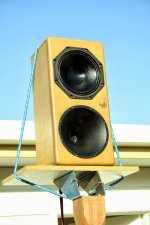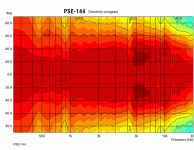Yes, they do look a bit rough
I wouldn't mind that much about the roughness of the expansion part. But the driver mounting flange is what troubles me. It does not seem to have any fixture holes ? Are you expected to drill your own screw holes for mounting ? Ok, these are truly DIY ?
An externally hosted image should be here but it was not working when we last tested it.
An externally hosted image should be here but it was not working when we last tested it.
I'm surprised more people aren't trying these.
The waveguide looks as good as the SEOS waveguides.
And they're widely available; you can get them at Guitar Center.
I've seen them for as little as $50 used.
Your lucky day kind of . I just finished up last night testing the 22TAF/G and the 27TBC/G
The 27TBC/G did fantastic leaving the faceplate on, which it is not removable the way the terminals are attached. It worked well in every shape guide I tried.
https://picasaweb.google.com/101632266659473725850/Seas27TBCG
The 22TAF/G had an issue with a dip at 12kHz on axis. it was not bad at 10 degrees and gone by 20 degrees. I was able to remove it putting a 1/2 round by 1/16" piece of felt on the screen but it also attenuated the top end by about 4 dbs. I was able to remove the screen but the dome is recessed below the surround. I can usually get rid of the dip by reducing the throat size but I need to get close to the dome. In this case I would have to put the guide below the face of the surround to get close enough and that just does not give good results.
These measurements are all with phase plug except the last one.
https://picasaweb.google.com/101632266659473725850/Seas22TAFG
Dave
Hi
I use these Seas drivers and I tried one on my recent system with and withoutthe wave guide. It rolls the top treble but brings more into the room dynamics but sets the soundstage back because of the droop below 2kHz
Which wave guide did you use, I recognise it from the few out there all much the same. You may need to lift the top treble to reveal some lost micro detail but also experiment fwd and backward to get proper diaphragm phasing.
They have some interesting shaped horns
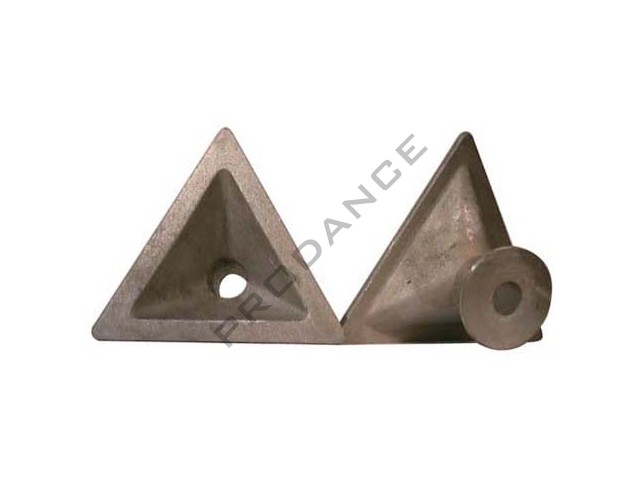
Looking at the finish they appear to be molded in the Isengard

Nevertheless I like them. Remains me from the old days when 'high tech' was measured in kilograms
Looks like the guy did an oil change under his car
@boldname, juhazi and others
The Megaton aluminium horns have slightly pre-drilled marks for the holes to mount the driver and the horn in a cabinet. At least that's the case on my recently aquired pair of C9090 (2" thread). Excellent bright uniform sound, by the way (it's a waveguide in fact) but with some inevitable UHF attenuation compared to a 90x40 horn.
Yes, they are a bit raw but the 2" thread is perfectly round (not the case on some of my vintage JBL gear) and the spacing of mounting holes matches perfectly the standard 4-screw mounting pattern. Drilling the holes through the aluminium is fairly easy.
The Megaton aluminium horns have slightly pre-drilled marks for the holes to mount the driver and the horn in a cabinet. At least that's the case on my recently aquired pair of C9090 (2" thread). Excellent bright uniform sound, by the way (it's a waveguide in fact) but with some inevitable UHF attenuation compared to a 90x40 horn.
Yes, they are a bit raw but the 2" thread is perfectly round (not the case on some of my vintage JBL gear) and the spacing of mounting holes matches perfectly the standard 4-screw mounting pattern. Drilling the holes through the aluminium is fairly easy.
Most awesome unity/synergy horn. Hope to hear them soon!
redspade-audio.blogspot.com.au/2014/04/pse-144-launch-update.html


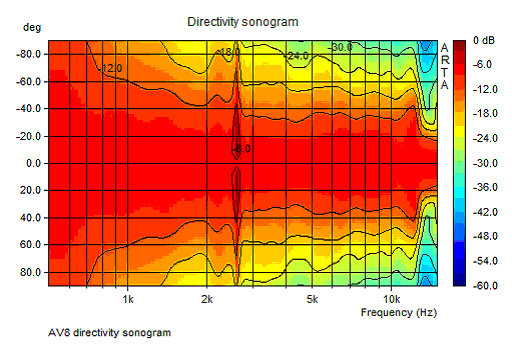
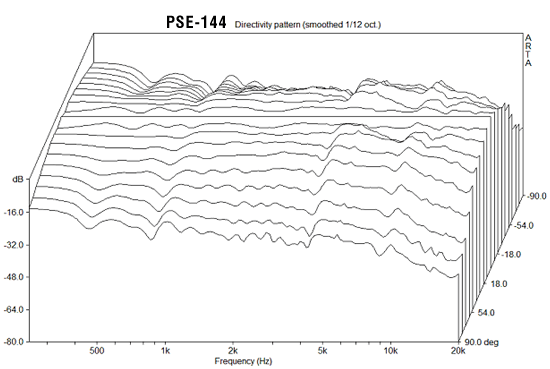
redspade-audio.blogspot.com.au/2014/04/pse-144-launch-update.html




More info here Acoustic Room analysis and Custom Designed speakers Melbourne
I did not see dimensions, but width must be something like 75-80cm (30") ? Could possess some WAF issues for domestic use...
The colorful sonoram in previous post is not from this, let me try...

I did not see dimensions, but width must be something like 75-80cm (30") ? Could possess some WAF issues for domestic use...
The colorful sonoram in previous post is not from this, let me try...

Last edited:
This is the AV8 (as seen below) polar, NOT the elliptical PSE-144 "unity" type.
Attachments
wow! I invented such shape for corner placement 2 years agoThey have some interesting shaped horns

looking very beautiful!Looking at the finish they appear to be molded in the Isengard..
Nevertheless I like them. Remains me from the old days when 'high tech' was measured in kilograms
Scott,
Thanks for the plot, that's more like it.
Not sure what you mean by the scaling, looks normal to me.
You're welcome!
The major problem is the plot's db range. It's MUCH to "broad" - with a single color (Red) that spans a large range of spl - a full 12 db on the AV8 plot alone (..and who knows how much on the PSE-144).
Even the "pattern" plot (as opposed to the color "sonogram" plot), is really "broad" - with 16 db interval scale (..and made worse with measurements derived from 1/12 octave smoothing).
The range should have been closer to 1db (with color gradations based on that), and the initial measurements should have been at most 1/24th octave smoothing. As both plots are currently displayed you only see the very "broadest strokes" of polar behavior.
This is the PSE-144's elliptical "unity" horn horizontal polar:
OOPS Silly me
Yes this one is the correct Polar Plot of PSE-144
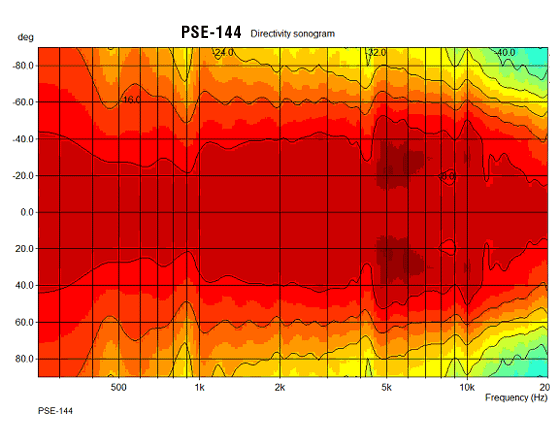

You guys who are complaining about the scale in these - Please note the HUGE DIRECTIVITY INDEX this horn has. It is a totally different animal to conventional loudspeakers, even Geddes's Summa/Abbey.
But I agree with you so that it would be better to have a standard for these. Perhaps soon we will see better comparisons done by RedSpade or gainphile...
But I agree with you so that it would be better to have a standard for these. Perhaps soon we will see better comparisons done by RedSpade or gainphile...
Last edited:
The scale is chosen so that a contour line shows up that corresponds to the beamwidth (-6 dB). If I were to force the PSE-144 sonogram to follow a particular standard, you would not so easily and intuitively see how its dispersion compares to the 80 degree nominal target.
The darker regions around 5 - 7k (15 - 35 degrees) meant I had to change the scale for this to occur. The plot is normalised and so it makes this region look like a peak off axis. In reality, it is a dip from 0 - 15 degrees.
I should also point out that the more recent plots of mine aren't comparable to earlier ones, which had much more smoothing and a shorter measurement window. This provides greater resolution in the data, but to achieve it I had to place the horn so high up in the air that it became a bit of a hazard. We had a little gust of wind ... "it's falling" and I turned around to see a horn almost ONE METRE wide (36") about to come crashing down onto the ground.
Let's just say plans are underway to build a new measurement system.
There are many practical challenges in taking measurements like these. In this case, the thing needs someone to hold it in place, as the mouth sits on the pivot point of the turntable, so the weight is sitting at the back and makes it unstable. Otherwise, the angles are incorrect and the distance to the mic changes each time. A speaker this wide requires greater mic distance to pick up baffle effects, meaning the speaker has to go up higher again. Further, the smoothing applied by the software is added to any gating. If you generate an ungated sonogram, the dispersion in the low midrange region is different. Short measurement windows smooth the data even more.
So you have a person holding the horn and turntable the whole time and speed becomes important. Hence, I use a normalised plot with a quick DSP crossover that is put together quickly.
One surprise with this horn is that it's less imposing than the pyramid MDF prototype that went before. WAF would be better than you might expect, although there are some women who call anything bigger than Bose an interior disaster.
The darker regions around 5 - 7k (15 - 35 degrees) meant I had to change the scale for this to occur. The plot is normalised and so it makes this region look like a peak off axis. In reality, it is a dip from 0 - 15 degrees.
I should also point out that the more recent plots of mine aren't comparable to earlier ones, which had much more smoothing and a shorter measurement window. This provides greater resolution in the data, but to achieve it I had to place the horn so high up in the air that it became a bit of a hazard. We had a little gust of wind ... "it's falling" and I turned around to see a horn almost ONE METRE wide (36") about to come crashing down onto the ground.
Let's just say plans are underway to build a new measurement system.
There are many practical challenges in taking measurements like these. In this case, the thing needs someone to hold it in place, as the mouth sits on the pivot point of the turntable, so the weight is sitting at the back and makes it unstable. Otherwise, the angles are incorrect and the distance to the mic changes each time. A speaker this wide requires greater mic distance to pick up baffle effects, meaning the speaker has to go up higher again. Further, the smoothing applied by the software is added to any gating. If you generate an ungated sonogram, the dispersion in the low midrange region is different. Short measurement windows smooth the data even more.
So you have a person holding the horn and turntable the whole time and speed becomes important. Hence, I use a normalised plot with a quick DSP crossover that is put together quickly.
One surprise with this horn is that it's less imposing than the pyramid MDF prototype that went before. WAF would be better than you might expect, although there are some women who call anything bigger than Bose an interior disaster.
- Home
- Loudspeakers
- Multi-Way
- Great Waveguide List
